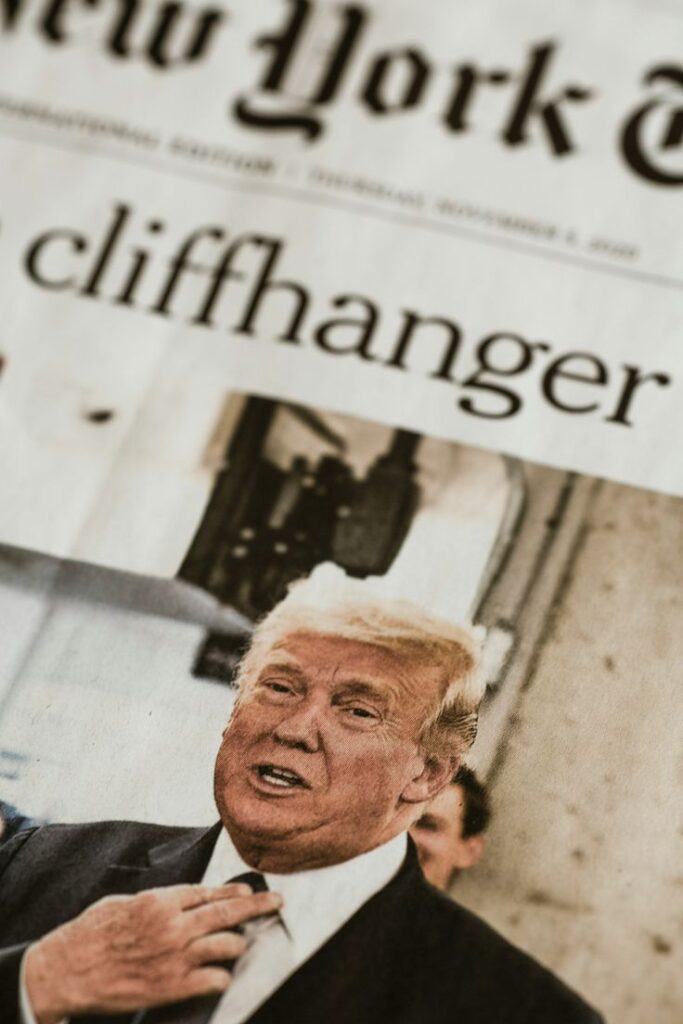Trump tariffs are back in the headlines, and this time, they’re bigger, broader, and more controversial than ever.
In his latest move to upend global trade, President Donald Trump has announced sweeping new duties on goods from nearly every country in the world.
Supporters say the tariffs will protect American jobs and rebuild domestic manufacturing. Critics warn they will drive up prices, strain US alliances, and risk sparking a wider trade war.
With key deadlines looming and legal challenges mounting, the new Trump tariffs could reshape not only America’s economy but also its role in the global marketplace.
The Latest News On Trump’s Tariffs – August 2025
President Donald Trump has unveiled the most sweeping tariff plan in modern US history, raising import taxes on nearly every country around the globe. The move cements his break from the decades-long consensus on free trade that defined both Republican and Democratic administrations.
For Trump, tariffs are a political trademark, a symbol of his “America First” agenda. For businesses, consumers and trading partners, they’re a major source of anxiety.
The headline numbers are stark. Countries with which the US runs a trade deficit will now face tariffs starting at 15%, while 26 nations deemed “worst offenders” will be hit with even higher rates, in some cases more than 40%.
Critics warn this could fuel inflation, test US alliances, and spark retaliation abroad, while Trump insists it will restore fairness and revive American manufacturing.
Here’s everything you need to know about the latest wave of Trump tariffs.

A Breakdown Of The New Trump Tariffs
Here’s a breakdown of Trump tariffs for different countries as of August 2025:
- Universal Tariff: 10% on imports from countries where the US has a trade surplus
- Deficit Countries (Baseline Tariff): 15% on imports from ~40 countries where the US runs a trade deficit
Countries with higher tariffs than 15%:
- Algeria – 30%
- Bangladesh – 20%
- Bosnia and Herzegovina – 30%
- Brunei – 25%
- Cambodia – 19%
- India – 25%
- Indonesia – 19%
- Iraq – 35%
- Kazakhstan – 25%
- Laos – 40%
- Libya – 30%
- Malaysia – 19%
- Moldova – 25%
- Myanmar – 40%
- Nicaragua – 18%
- Pakistan – 19%
- Philippines – 19%
- Serbia – 35%
- South Africa – 30%
- Sri Lanka – 20%
- Switzerland – 39%
- Syria – 41%
- Taiwan – 20%
- Thailand – 19%
- Tunisia – 25%
- Vietnam – 20%
Key Trade Partners:
- Canada – 35% tariff (non?USMCA exempt goods) – in effect from 1 August 2025
- Mexico – 25% tariff (non?USMCA exempt goods), with a 90?day extension; Trump threatened 30% but held off
- European Union – 15% tariff on most goods (deal signed in July 2025)
- Japan & South Korea – 15%
- Brazil – 50%
- UK – 10% on most exports (lowest negotiated rate so far, with quotas for cars)
- China – tariffs currently under a truce (up to 100%+ previously), pause due to expire 12 August 2025
When Do The New Tariffs Start?
Most of the new measures come into force on 7 August 2025. The delay is practical: US Customs and Border Protection says it needs time to update systems and prepare for the sharp increase in duties.
But Canada, the closest US trading partner, was singled out. Higher tariffs on non-exempt Canadian goods began immediately on 2 August. Officials say Trump deliberately chose to impose those duties without delay, making a political point about North American trade.
What Was The Point Of The Pause In Tariffs?
Originally, tariffs were set to rise on 1 August. Instead, Trump extended the timeline, giving negotiators and Customs officials a week’s breathing space.
This is part of a pattern. Back in April, Trump declared “Liberation Day,” hiking tariffs across the board, only to suspend them hours later after chaos in the markets. He then set August 1 as a final deadline, only to push it again.
For trading partners, the uncertainty is just as damaging as the tariffs themselves. Governments and businesses can’t plan when Trump’s next Truth Social post could rewrite trade policy overnight.
Why Does Trump Want Tariffs?
The president frames tariffs as a tool to level the playing field. In his telling, America has been cheated by trade partners for decades, forced into buying more than it sells, with working-class jobs hollowed out as factories closed.
By taxing imports, Trump argues, he is punishing countries with lopsided trade relationships and encouraging US companies to bring production home.
Economists disagree. They point out that deficits are not inherently bad; they often reflect a strong services economy, foreign investment, and high consumer demand. Far from being an “emergency,” trade deficits have been a feature of US economic life for over 40 years.
How Can Trump Impose Tariffs Without Congress?
This is where things get legally messy. Traditionally, Congress controls tariffs. Trump, however, is invoking the International Emergency Economic Powers Act (IEEPA), a Cold War-era law designed for genuine national emergencies.
In May, the Court of International Trade ruled that using IEEPA this way was an overreach. Judges in an ongoing appeal have expressed open scepticism. “Can the trade deficit be an extraordinary and unusual threat when we’ve had trade deficits for decades?” asked Judge Raymond Chen.
The case is likely to reach the Supreme Court. But legal challenges move slowly. In the meantime, Trump can continue using executive authority to impose tariffs, keeping markets on edge.
Why Is Trump Putting Tariffs On Canada?
Canada is usually seen as America’s most reliable partner. But Trump has long bristled at what he calls Canada’s unfair advantages in dairy and timber, and insists the USMCA trade deal still leaves the US exposed.
Officials say Canada’s consistent trade surplus with the US makes it a target. In practice, the decision also plays well politically with Trump’s base, which sees tariffs as proof he is willing to be tough even with allies.
What’s The Likely Impact Of Tariffs On Canadian Goods?
Non-exempt Canadian products now face a 35% tariff, up from 25%. That’s a punishing blow for exporters of lumber, steel, and agricultural products, all critical to cross-border trade.
For US businesses, the pain will be felt in construction and retail. Lumber and steel price hikes mean higher costs for homebuilders and automakers, which will eventually filter down to consumers. Shoppers could see more expensive groceries too, given Canada’s strong role in supplying dairy and processed foods.
Trump’s Tariffs On China
What Were Tariffs On China Before Trump?
China struck a temporary deal with Washington earlier this year, holding tariffs at 10%, lower than the new 15% floor. But that deal expires on 12 August, leaving Beijing braced for a possible sharp increase.
What Could Be The Impact On American Pockets?
The risk is inflationary. China is a major supplier of electronics, clothing, toys, and household goods. If tariffs spike, the price of everyday essentials could jump.
Already, multinationals like Walmart and Procter & Gamble are warning of rising costs linked to earlier tariff rounds. If the China deal collapses, American households will feel it in their wallets — quickly and directly.
Trump’s Tariffs On Mexico
Mexico avoided an immediate tariff hike after Trump threatened to raise duties to 30%. Following a direct call with Mexican President Claudia Sheinbaum, the US agreed to extend Mexico’s existing 25% tariff rate for another 90 days.
What Impact Could Tariffs On Mexican Goods Have?
Mexico is vital to US supply chains. Cars, fresh produce, electronics, and household goods cross the border daily. A tariff hike would mean:
- Higher supermarket prices for fresh fruit, vegetables, and beer.
- Disruption to the auto industry, with car prices likely to climb.
- Job risks in border states, where businesses depend on cross-border trade.
In short: consumers would pay more, while industries reliant on Mexican imports would face higher costs and uncertainty.
What Could Happen Next?
Trump’s tariff offensive is bold, disruptive, and legally precarious. It’s designed to appeal to his base and project toughness abroad, but the economic consequences, for US households, for allies like Canada and Mexico, and for the global economy at large, could be profound.

